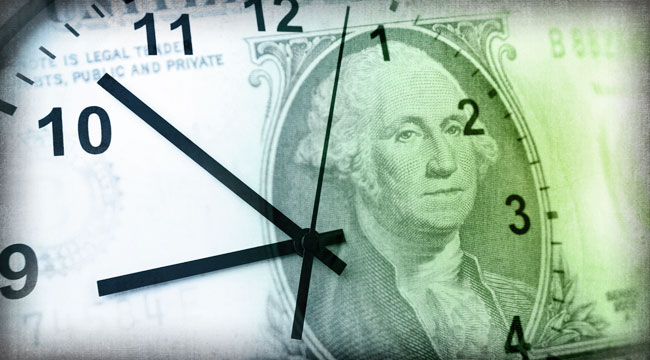Remember When… the US Deficit Was “Only” $82.7 Billion?
Welcome to the Daily Reckoning’s “Remember When” series. Each day we turn back the clock and take a look at our musings from five and ten years ago to the day.
Not only will you be shocked at just how quickly time passes (yes, 2005 was a decade ago), but you can see what we predicted correctly, what we missed the mark on, and how history does, in fact, have a habit of rhyming.
May 15, 2010 in The Daily Reckoning…
“Stockholm Syndrome and The State”
This article was written in light of the government having posted the latest deficit, or, what our editor thinks should have been widely viewed as another gross misallocation of taxed/begged/borrowed/stolen resources. This marked the 19th consecutive month the national budget fell short of anything close to balanced.
Addison Wiggin’s5-Minute Forecast commentary was included, remarking that the $82.7 billion deficit number was merely the BS figure the Treasury puts out when it reports the deficit. The real tell, advised Addison, is how much the national debt grew. In April of 2010, that figure was $175.6 billion, twice the size of the ‘official’ monthly deficit. Our editor ends by posing the question of who are those among us who still expect the government to fix all of our problems?
May 15, 2005 in The Daily Reckoning…
“Market Review: The Wall of Worry”
In this article, then DR editor, Tom Dyson, recalled a day spent at the Chelsea Piers gym with Paul Mampilly, former Wall Street analyst and portfolio manager. The two discussed finance whilst rock-climbing inside the gym, as well as the website Paul set up after leaving Wall Street. Paul’s website touched on ‘capuchinomics,’ or behavioral finance, which uses human emotion as the primary factor in analyzing the fluctuations of markets and securities.
Paul had made the point about why a company in the biotech industry was more valuable and/or more volatile than a company with similar characteristics in the furniture business. If efficient markets price stocks without distinction, these two companies should have similar values. But since they don’t, the answer must lie beyond value and in the human psyche. In its desire to perceive more value from one enterprise over the other based on experimental, emotional and subjective qualitative factors.
À tout à l’heure,
Genevieve LeFranc
for The Daily Reckoning
P.S. If you haven’t signed up to receive the Daily Reckoning by email yet, what are you waiting for? We reserve our best commentary for email subscribers. It’s nothing personal… but we like to get to know our best readers and give them something extra. And we do that by writing to you every day the market’s open. You can sign up here to get the DR sent to your inbox each day for free. Today, for example, we’re writing to readers about the “Triffin Dilemma” and what it means for interest rates. Click here to join us.



Comments: